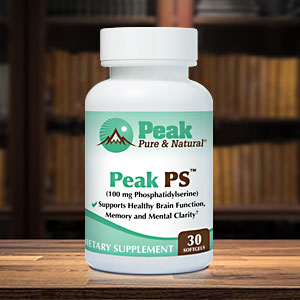Get Easy Health Digest™ in your inbox and don’t miss a thing when you subscribe today. Plus, get the free bonus report, Mother Nature’s Tips, Tricks and Remedies for Cholesterol, Blood Pressure & Blood Sugar as my way of saying welcome to the community!
How many steps a day does it take to keep your brain young?

I’ve known for some time that a sedentary lifestyle is not the best way to age well. I know that getting outside for a walk each day will help me stay trim, keep my bones strong, manage my high blood pressure and prevent heart disease and diabetes.
I haven’t always acted on this knowledge. Until now.
I fear Alzheimer’s and memory loss just as much or more than I fear other health conditions. I’m betting you do, too.
When I read the two pieces of research I’m about to share with you, I promised myself I’d start walking daily.
I’ve been true to my word. I hope you will be, too.
Every footstep sends oxygen to the brain
We know that a good, brisk walk can improve your mood, get the blood flowing and help you concentrate better. But there’s more to it than that.
Two studies released last year show that, in fact, every step we take actually results in physical changes to the brain that improve our ability to hold on to memories and use them when we need them.
A team of researchers at New Mexico Highlands University discovered something seemingly simple, yet vitally important about walking and our brain.
They found that the foot’s impact during walking sends pressure waves through the arteries that increase blood supply to the brain.
With increased blood flow comes more oxygen to support the brain areas responsible for memory and cognition.
Not only that: the researchers found that when we walk briskly, our stride rate (number of steps per minute) and heart rate tend to fall into sync, revealing the vital connection between the two.
More steps = a bigger brain, better memory
The second important study comes from the Semel Institute for Neuroscience and Human Behavior at the University of California.
Researchers there worked with a group of 29 adults ages 60 or above. All started with some degree of memory complaints, but none were diagnosed with dementia or Alzheimer’s.
Participants were divided into two groups:
- a low physical activity group (people who walked 4000 or fewer steps each day)
- a high physical activity group (people who walked more than 4000 steps each day).
All underwent MRIs and neuropsychological tests to assess their cognitive capacity.
The high physical activity group had thicker hippocampi (the hippocampus is the brain region responsible for mood, memory and learning). Walking had actually changed the size of their brains!
This group also had better attention, speedier information processing ability and more efficient working memory (the way we store short-term experiences and access them as needed).
How to get your 4000 steps
Convinced? Need some tips for how to get all that walking done in a typical, busy day? Here you go!
- Use a pedometer. This simple device counts your steps. Wear it like a wristwatch and see how you’re doing. If you’re low on steps, take a walk at lunch time or after dinner.
- Add steps gradually. Just like any other exercise routine, don’t go whole hog on your first day. Try adding 200 or 300 steps per day.
Here are some ways to sneak in some steps during the course of your day:
- Get off the bus or train a stop before yours and walk the rest of the way.
- Park in a spot at the end of the parking lot when you go to work or the store.
- Use the stairs, not the elevator.
- Have a walking meeting. You can have the same conversation while walking as you can sitting at a table.
- Go to the mall. (Just keep moving, rather than stop at every store!)
- Get some headphones and some good music or podcasts. Just be sure to pay attention to your surroundings, like traffic and other people.
- Make a commitment. Like, “I’ll walk 500 steps between dinner and bedtime.” Then find a way to make it happen.
- Set your alarm. Get up from your desk every two hours and take a short walk, even if it’s inside the building.
Editor’s note: While you’re doing all the right things to protect your brain as you age, make sure you don’t make the mistake 38 million Americans do every day — by taking a drug that robs them of an essential brain nutrient! Click here to discover the truth about the Cholesterol Super-Brain!
Sources:
- Walk 4,000 steps every day to boost brain function — medicalnewstoday.com
- How walking benefits the brain — Experimental Biology 2017
- 20 Ways to Improve Brain Circulation – and How It Helps Cognitive Function — Selfhacked













